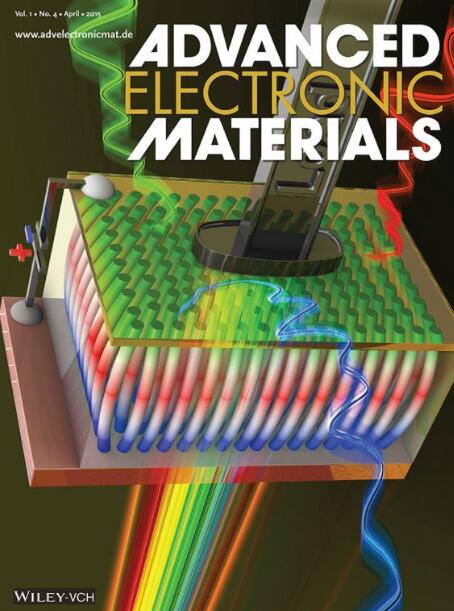MBE‐Grown ScAlN‐on‐Si Films: Enhancing In‐Plane Crystallinity for Extensional Mode BAW Resonators
IF 5.3
2区 材料科学
Q2 MATERIALS SCIENCE, MULTIDISCIPLINARY
引用次数: 0
Abstract
Piezoelectric thin films are playing an increasingly important role in micro‐electromechanical systems (MEMS) as the expansion of 5G networks and the rise of Internet of Things (IoT) technologies fuel the need for smaller, more reliable, and energy‐efficient sensors and actuators. Alloying Aluminum Nitride (AlN) with Scandium (Sc) is a promising approach to enhance piezoelectric properties in wurtzite semiconductors. However, investigations on ScAlN piezo‐on‐Silicon (Si) have been largely focused on sputtered materials, which often limit resonators to operate in the out‐of‐plane mode, resulting in limited Q. In this study, the piezoelectric properties of ScAlN thin films are reported, which are epitaxially grown on AlN‐buffered Si (111) with enhanced in‐plane crystallinity and a high piezoelectric modulusMBE生长的ScAlN - on - Si薄膜:增强扩展模式BAW谐振器的平面内结晶度
随着5G网络的扩展和物联网(IoT)技术的兴起,推动了对更小、更可靠、更节能的传感器和执行器的需求,压电薄膜在微机电系统(MEMS)中发挥着越来越重要的作用。氮化铝(AlN)与钪(Sc)合金化是提高纤锌矿半导体压电性能的一种很有前途的方法。然而,对ScAlN压电硅(Si)的研究主要集中在溅射材料上,这通常限制了谐振器在面外模式下工作,导致q值有限。在本研究中,ScAlN薄膜的压电特性被报道,该薄膜外延生长在AlN缓冲的Si(111)上,具有增强的面内结晶度和高压电模量d33,当Sc成分为30%时,高达25.7 pC/N。这使我们能够证明扩展模式ScAlN - on - Si体声波(BAW)谐振器在70.28 MHz时具有≈97k的超高Q,导致频率Q产品≈6.86 × 1012,表明低能量损失和高频率精度,使其成为具有极低延迟要求的新兴无线技术的理想选择。
本文章由计算机程序翻译,如有差异,请以英文原文为准。
求助全文
约1分钟内获得全文
求助全文
来源期刊

Advanced Electronic Materials
NANOSCIENCE & NANOTECHNOLOGYMATERIALS SCIE-MATERIALS SCIENCE, MULTIDISCIPLINARY
CiteScore
11.00
自引率
3.20%
发文量
433
期刊介绍:
Advanced Electronic Materials is an interdisciplinary forum for peer-reviewed, high-quality, high-impact research in the fields of materials science, physics, and engineering of electronic and magnetic materials. It includes research on physics and physical properties of electronic and magnetic materials, spintronics, electronics, device physics and engineering, micro- and nano-electromechanical systems, and organic electronics, in addition to fundamental research.
 求助内容:
求助内容: 应助结果提醒方式:
应助结果提醒方式:


